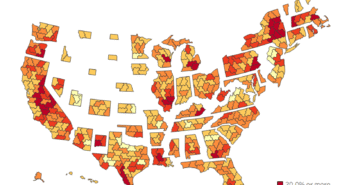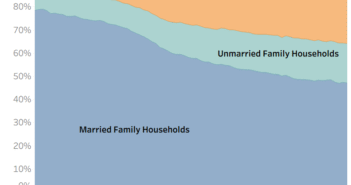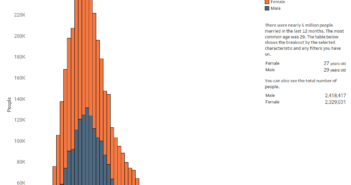Why QWIC?
To ensure that all Americans have access to the “pursuit of happiness” now and in the future, we should ensure that children live in an enviroment that allows them to thrive. Families, communities, and policymakers seek to provide the environment where children can grow into healthy, capable, and hopeful adults. The Quality Wellness Indicator for Children (QWIC) offers a simple, evidence-based measure.
QWIC emphasizes positive factors that promote flourishing. The six components of QWIC are:
- Stable Family Enviorment
- Educated Adults in the Home
- School Enrollment
- Health Coverage
- Economic Security
- Language Access
When children experience most or all of these factors, they are more likely to succeed in school and develop the skills needed to thrive as adults. Unsuprisingly, there can be large variation throughout the country for how many children have these factors.
Nationally, about two in three children meet nearly all of these benchmarks. The picture varies widely across states and communities. In some places, more than 80 percent of children benefit from these conditions. In other states though, fewer than 60 percent do. This variation highlights both the progress that many families have made and the persistent challenges that others face.
By focusing on positive indicators of wellness, QWIC reframes the conversation. Rather than measuring deficits alone, it spotlights the foundations of resilience and opportunity. Policymakers and communities can use QWIC to identify strengths to build on and gaps to close. This will help to ensure that every child, no matter where they live, has the chance to pursue life, liberty, and happiness.
Methodology
The Quality Wellness Indicator for Children (QWIC) is created using data from the 2023 American Community Survey (ACS) Public Use Microdata Sample (PUMS). It provides a child-level measure of whether children under age 18 live in places that meet six positive conditions associated with long-term well-being. Each child is assigned a values of 1 (meets condition) or 0 (does not) for each indicator.
Indicators
- Stable Family Environment – Child lives in a married-couple family household.
- Educated Adults in Household – At least one parent or adult has a high school diploma or higher.
- Education/School Enrollment – Children that are 6 and over are enrolled in school. For children under 6, the same enrollment check is done. If the child is not enrolled, adult education (indicator 2) is used as a proxy for early learning opportunity.
- Health Security – Child has health insurance coverage.
- Economic Security – Household income is at least 300% of the federal poverty threshold.
- Language Access – Household is not linguistically isolated, meaning at least one person 14 or older speaks English “very well” or only English.
Scoring
- Each child may receive a maximum of 6 points (5 binary indicators plus the dual-purpose education measure).
- Children are categorized as:
- Meeting All or Nearly All Wellness Criteria (5-6 points)
- Does not Meet Most of the Wellness Criteria (0–4 points)
Rationale
Social science research have driven the indicators that we selected for QWIC. This research links family structure, parental education, school enrollment, health coverage, economic resources, and language access to improved child outcomes. By focusing on protective factors, QWIC complements existing measures of vulnerability. QWIC provides a positive, opportunity-oriented view of child well-being.
Feedback
We would love feedback on how we can improve QWIC. We consider this a beta version and will utilize the feedback we recieve to improve the measure in the future. Reach out to us on X or email to let us know what you think.
Research Supporting Indicator Selection
- Child Trends. (2023). Why family structure and stability matter for children. Institute for Family Studies. https://ifstudies.org/blog/children-first-why-family-structure-and-stability-matter-for-children
- Schmeer, K. K., & Yoon, A. (2023). Family structure transitions and child stress. Journal for the Scientific Study of Religion. https://journals.sagepub.com/doi/10.1177/00221465231223953
- Dubow, E. F., Boxer, P., & Huesmann, L. R. (2009). Long-term effects of parents’ education on children’s educational and occupational success: Mediation by family interactions, child aggression, and teenage aspirations. Merrill-Palmer Quarterly, 55(3), 224–249. https://bibliography.icpsr.umich.edu/bibliography/citations/data/123779/fileDownload
- National Center for Education Statistics (NCES). (2023). Enrollment of young children. https://nces.ed.gov/programs/coe/indicator/cfa/enrollment-of-young-children
- Yoshikawa, H., et al. (2018). Early childhood education and care quality and child development. Future of Children, 28(2), 3–32. https://pmc.ncbi.nlm.nih.gov/articles/PMC6107077/
- Alker, J., & Pham, O. (2018). Nation’s progress on children’s health coverage reverses course. Washington, DC: Georgetown University Center for Children and Families. Retrieved from https://ccf.georgetown.edu/wp-content/uploads/2018/11/UninsuredKids2018_Final_asof1128743pm.pdf
- Evans, G. W., & Kim, P. (2013). Childhood poverty, chronic stress, self-regulation, and coping. Child Development Perspectives, 7(1), 43–48. https://pmc.ncbi.nlm.nih.gov/articles/PMC2847736/
- Frank, D. A., et al. (2006). The effects of poverty on child health and development. Annual Review of Public Health. https://marxe.baruch.cuny.edu/wp-content/uploads/sites/7/2021/05/The-Effects-of-Poverty-on-Child-Health-and-Development.pdf
- Hernandez, D. J., & Napierala, J. S. (2012). Children in linguistically isolated households: Improving data to understand the risk to child well-being. Child Trends. https://pmc.ncbi.nlm.nih.gov/articles/PMC3499731/


